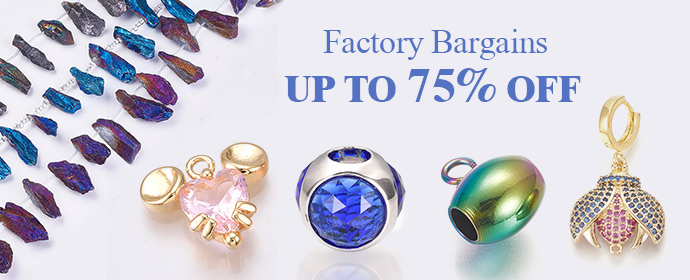Fashion has always been an integral part of human culture. We use clothes to express our personalities, make statements about our identities, and feel confident and comfortable in our skin. However, the fashion industry has become one of the biggest polluters in the world, with massive amounts of waste, pollution, and unethical labor practices. That is why embracing sustainable fashion and ethical clothing is essential, which prioritizes environmental and social responsibility.

Table of Contents
1. Introduction
2. What is Sustainable Fashion?
3. The Importance of Sustainable Fashion
4. Ethical Clothing: What Does It Mean?
5. The Impact of Fast Fashion
6. The Advantages of Ethical Clothing
7. Tips for Building a Sustainable Wardrobe
8. Top Sustainable Fashion Brands
9. Conclusion
10. FAQs
What is Sustainable Fashion?
Sustainable fashion refers to a holistic approach to the design, production, and consumption of clothing that minimizes the negative impact on the environment and society. It involves using eco-friendly and biodegradable materials, reducing waste and pollution, promoting fair labour practices, and supporting local and ethical production methods.
The Importance of Sustainable Fashion
The importance of sustainable fashion cannot be overstated. The fashion industry is the second-largest polluter in the world, generating more greenhouse gas emissions than all international flights and maritime shipping combined. The production of textiles and clothing requires vast amounts of water, energy, and chemicals, contributing to soil degradation, water pollution, and biodiversity loss. Sustainable fashion aims to address these challenges by using eco-friendly materials, reducing waste and pollution, and supporting ethical labour practices.
Ethical Clothing: What Does It Mean?
Ethical clothing refers to clothing that is made in a way that respects workers’ rights, human dignity, and the environment. Ethical clothing production involves fair labor practices, safe working conditions, and sustainable production methods. It also involves avoiding the use of harmful chemicals and reducing waste and pollution.
The Impact of Fast Fashion
Fast fashion is a model of clothing production and consumption that prioritizes speed and low cost over quality, durability, and sustainability. It involves producing large quantities of cheap and disposable clothing that is quickly consumed and discarded. This model contributes to overproduction, waste, and pollution, as well as unethical labour practices and human rights violations.
The Advantages of Ethical Clothing
The advantages of ethical clothing are numerous. By choosing ethical clothing, consumers can support fair labour practices and help reduce the negative impact of clothing production on the environment. Ethical clothing is made to last, using high-quality materials and sustainable production methods, which means it is less likely to be discarded quickly, contributing to less waste and pollution.
Tips for Building a Sustainable Wardrobe
Building a sustainable wardrobe can seem overwhelming, but there are several steps you can take to make it more manageable. First, start by decluttering your closet and donating or selling clothes you no longer need. Then, choose versatile, timeless pieces that can be worn in different ways and for different occasions. Look for clothes made from eco-friendly materials such as organic cotton, linen, or hemp. Support local and ethical fashion brands and avoid fast fashion brands.
Top Sustainable Fashion Brands
Several fashion brands prioritize sustainability and ethical production methods. Here are some of the top sustainable fashion brands you can check out:
• Patagonia
• Stella McCartney
• Everlane
• Reformation
• Veja
• Eileen Fisher
• People Tree
• Amour Vert
• Mara Hoffman
Conclusion
Sustainable fashion and ethical clothing are essential for a more sustainable future. By choosing eco-friendly and ethical fashion,
FAQs
1. What are the benefits of sustainable fashion and ethical clothing?
• Sustainable fashion and ethical clothing benefit the environment by reducing waste and pollution, conserving natural resources, and promoting sustainable production methods. They also benefit workers and local communities by supporting fair labour practices, safe working conditions, and ethical production methods.
2. What are some eco-friendly materials used sustainably?
• Some eco-friendly materials used sustainably include organic cotton, hemp, linen, bamboo, and recycled polyester.
3. How can I tell if a brand is ethical and sustainable?
• Look for certifications such as Fair Trade, GOTS (Global Organic Textile Standard), and OEKO-TEX Standard 100 to ensure that a brand is using ethical and sustainable production methods. You can also research the brand’s supply chain and labour practices to see if they prioritize fair labour practices and environmental responsibility.
5. Is sustainable fashion more expensive than fast fashion?
• Sustainable fashion can be more expensive than fast fashion due to the use of high-quality materials, sustainable production methods, and fair labor practices. However, investing sustainably means investing in a long-lasting, durable wardrobe that is better for the environment and supports ethical production methods.
6. How can I make my wardrobe more sustainable?
• You can make your wardrobe more sustainable by choosing versatile, timeless pieces, decluttering your closet, and choosing clothes made from eco-friendly materials. You can also support local and ethical fashion brands and avoid fast fashion brands.
Photo credit Getty Images
By Tanveer Raza
Recommend0 recommendationsPublished in apparel, celebrity fashion, Our Fashion Passion, Uncategorized





